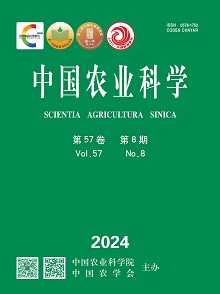【Objective】The aim of the experiment was to screen slow (controlled) release fertilizer products by using one-off fertilization for realizing the target of high, stable, sustainable yield of summer maize in Huang-Huai-Hai plain.【Method】Four sites in three maize big provinces (Shandong, Henan and Hebei) were selected as fixed position experiment sites of one-off fertilization on summer maize, ten varieties of slow (controlled) release fertilizer (CRF) as testing fertilizer, including CRFA, CRFB, CRFC, CRFD, CRFE, CRFF, CRFG, CRFH, CRFI, and CRFJ, were selected as testing fertilizers, and then effects of one-off fertilization of different slow (controlled) release fertilizer on yield of summer maize was researched.【Result】Maize yield between different experimental sites as well as different years were significantly different at 0.05 probability level (F=40.67, F=2.95), but maize yield between different fertilizer treatments had no significant difference. There was no significant difference between one-time application of CRF and OPT in the same year and the same region, so one-off fertilization could be achieved by one-time application of CRF. Yield sustainability of treatments about CRF was higher than that of OPT, and the range of SYI was 0.65-0.70. In addition to CRFE, yield stability of other treatments about CRF was higher than that of OPT, and the range of CV was 3.19%-7.32%. In the experiment site of Dezhou of Shandong province, average annual yield of summer maize had no significant difference between treatments about CRF and OPT. Average annual yield of summer maize under CRFC was the highest, which was 10734.06 kg·hm-2. Yield sustainability of treatments about CRF was higher than that of OPT, of which SYI of CRFI, CRFD and CRFB was more than 0.70. Yield stability of treatments about CRF was higher than that of OPT, and the range of CV was 14.00%-21.77%. In this study, there was no obvious correlation between yield sustainability and yield of summer maize. In the experiment site of Dezhou of Shandong, the SYI and CV of maize yield had significantly negative correlation, and the more stable the yield, the more sustainable the yield.【Conclusion】The CRF used in this study all had the effect of increasing yield of summer maize. Considering the aspect of high yield, CRFC, CRFA and CRFB could realize one-off fertilization on summer maize in Huang-Huai-Hai plain. And CRFC, CRFJ, CRFB, and CRFI could realize one-off fertilization on summer maize in the experiment site of Dezhou of Shandong province. Considering the aspect of sustainable yield, CRFG, CRFD and CRFH were better fertilizers in Huang-Huai-Hai plain. And CRFI,CRFD and CRFB were better fertilizers in the experiment site of Dezhou of Shandong province. Considering the aspect of stable yield, CRFH, CRFB and CRFG were better fertilizers in Huang-Huai-Hai plain. And CRFI、CRFD and CRFB were better fertilizers in the experiment site of Dezhou of Shandong province.











